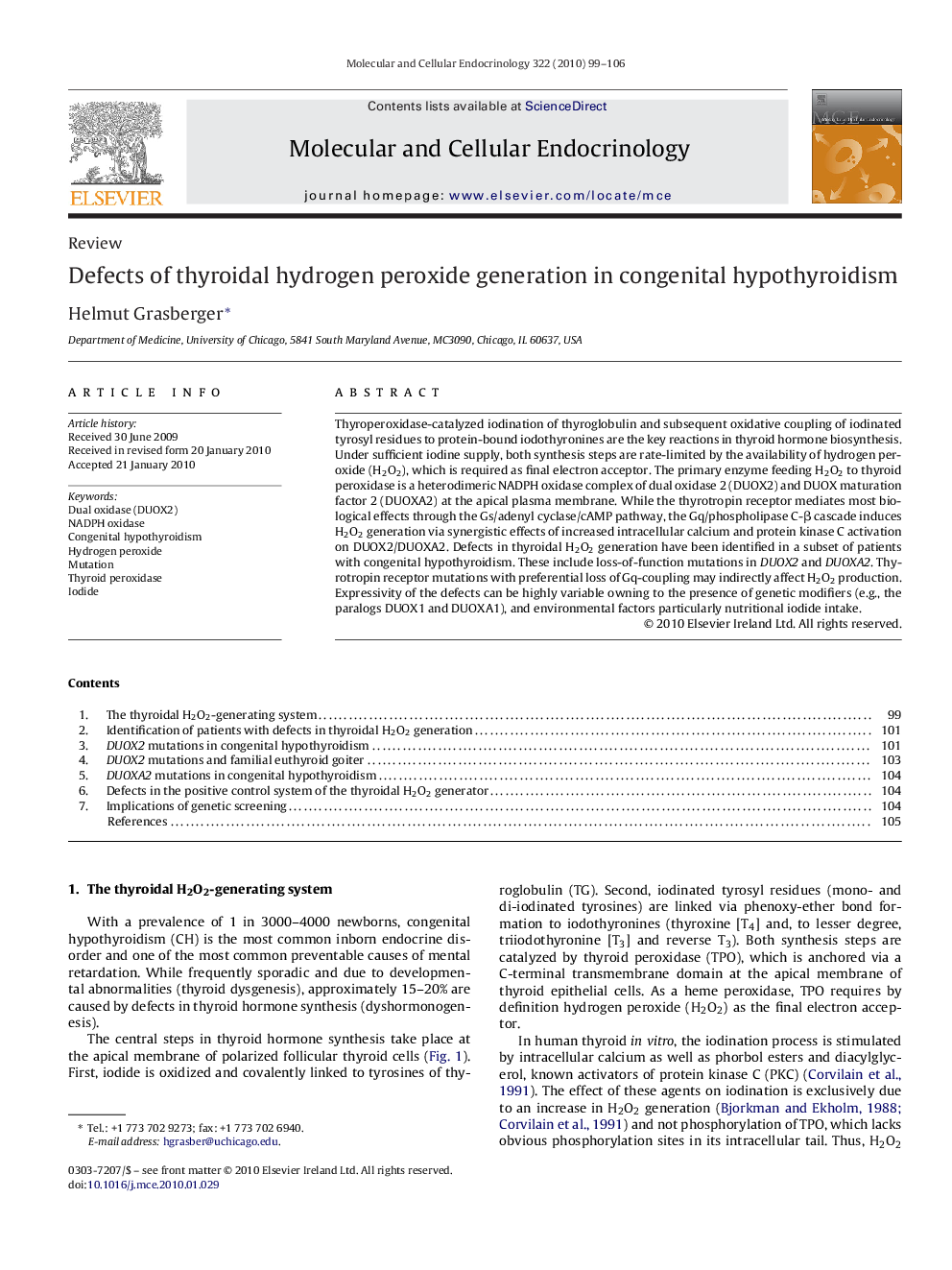| Article ID | Journal | Published Year | Pages | File Type |
|---|---|---|---|---|
| 2196849 | Molecular and Cellular Endocrinology | 2010 | 8 Pages |
Thyroperoxidase-catalyzed iodination of thyroglobulin and subsequent oxidative coupling of iodinated tyrosyl residues to protein-bound iodothyronines are the key reactions in thyroid hormone biosynthesis. Under sufficient iodine supply, both synthesis steps are rate-limited by the availability of hydrogen peroxide (H2O2), which is required as final electron acceptor. The primary enzyme feeding H2O2 to thyroid peroxidase is a heterodimeric NADPH oxidase complex of dual oxidase 2 (DUOX2) and DUOX maturation factor 2 (DUOXA2) at the apical plasma membrane. While the thyrotropin receptor mediates most biological effects through the Gs/adenyl cyclase/cAMP pathway, the Gq/phospholipase C-β cascade induces H2O2 generation via synergistic effects of increased intracellular calcium and protein kinase C activation on DUOX2/DUOXA2. Defects in thyroidal H2O2 generation have been identified in a subset of patients with congenital hypothyroidism. These include loss-of-function mutations in DUOX2 and DUOXA2. Thyrotropin receptor mutations with preferential loss of Gq-coupling may indirectly affect H2O2 production. Expressivity of the defects can be highly variable owning to the presence of genetic modifiers (e.g., the paralogs DUOX1 and DUOXA1), and environmental factors particularly nutritional iodide intake.
